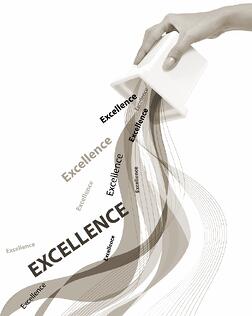 As mentioned in the first and second post of this series, if a marketing excellence program is to have sustained impact on an organization, it must have various interlocking components. Each component is designed to address different challenges in getting rapid results while delivering long-term change. These components are: Design, Implementation, Inspiration, and Measurement. We discussed the role of Design and Implementation in the first two posts. In this post, we will focus on Inspiration – inspiring change, unleashing creative energies, and motivating breakthrough thinking in the program.
As mentioned in the first and second post of this series, if a marketing excellence program is to have sustained impact on an organization, it must have various interlocking components. Each component is designed to address different challenges in getting rapid results while delivering long-term change. These components are: Design, Implementation, Inspiration, and Measurement. We discussed the role of Design and Implementation in the first two posts. In this post, we will focus on Inspiration – inspiring change, unleashing creative energies, and motivating breakthrough thinking in the program.
Inspiring Change through a Marketing Excellence Program
Most businesses – whether at a product level or at a regional level – are inundated with corporate programs. While well-intentioned, these programs are often seen as inflexible mandates, extra work, or a burdensome tax. No wonder they get push-back! For a marketing excellence group to succeed, it needs to apply some of its training to itself – i.e. it needs to be well-marketed. This requires the following:
- Program Vision and Goals - An inspirational vision gives the organization and its employees a sense of purpose and being part of something bigger. It answers the question, “Why should I care?” with an answer other than, “This will make our shareholders more money.” Some organizations express the vision, not just in business terms, but also in terms of what it will mean to their employees, customers, and partners. Whether it is “bringing greater comfort to our customers” or “becoming part of the highest-performing marketing team in our industry” – the vision needs to speak directly to the participants of the marketing excellence program and have true meaning for them. The program goals are also usually aligned with the corporate goals and give a common direction and set of milestones for the organization to achieve.
- Internal Marketing - There is a natural resistance and discomfort in any organization to doing things in new ways, especially when many in the organization feel that it is a mandate. Recent studies have shown that close to 70% of marketing transformation projects fail to achieve their goals. A major contributor to this low success rate is poor management of the change in the organization. To be successful, the internal marketing program should be just as carefully considered and managed as any external marketing program and follow the same external marketing program principles — identify the target audience roles, their desired behavior, and the key messages that will overcome their rational and emotional barriers. The internal marketing campaign will then produce the right engagement with the target audience, at the right contact-points, and at the right “aperture” moments.
- Senior Management Support - Senior management’s visible support and leadership is critical for the success of the program. This is true not just at the corporate level but also within the SBUs and regions. However, most sponsors of a marketing excellence program fail to realize that support has to be earned and also has to compete for support from other programs as well as business exigencies. Before becoming true champions, senior management must see the business benefits for themselves. Until a program fulfills the appeal of “Show me the money,” it is hard to expect deep commitment. It is therefore critical to create “proof-of-concepts” first before making a significant push for broad senior management sponsorship across the organization. When engaged, senior management has to be clear on the specific behavior that they have to exhibit to help drive the change in the organization.
In our next and final post in this series, we will focus on how an organization can evaluate the progress of a marketing excellence program.


